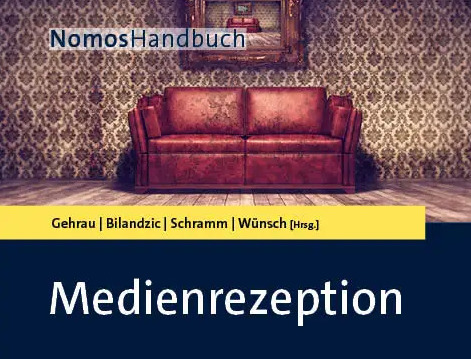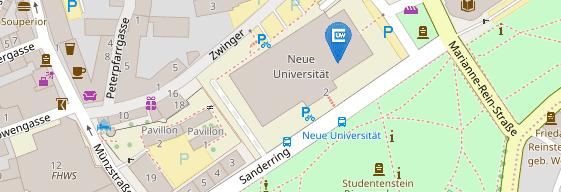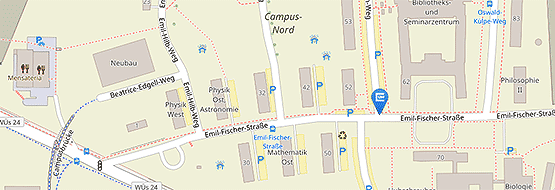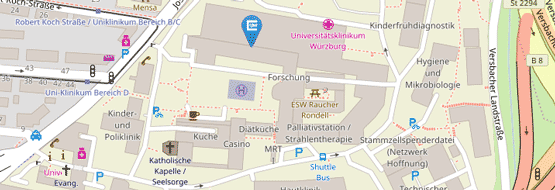Latest publications
New publication in focus
Handbook of Media Reception
The Handbook of Media Reception - edited by Volker Gehrau, Helena Bilandzic, Holger Schramm and Carsten Wünsch - offers a comprehensive overview of the subjects and theories of reception research. The 37 contributions provide a systematic approach to the state of the art of the respective topic from a communication science perspective. The comprehensively updated and expanded 2nd edition is divided into four parts: (1) with basic concepts of media reception, (2) with questions of attention and selection, (3) with specific phenomena and modes of experience and (4) with the most important contexts of media reception. Modern media effects theories can no longer do without analysing reception processes. The handbook therefore examines the processes before and during media use in detail. The target audience of the handbook is the broad specialist audience of communication science and related subjects such as sociology, psychology, political science and educational science.
The MWK team is involved with two chapters of its own: The aim of the chapter "Involved experience in media reception" by Zoe Olbermann, Fabian Mayer and Holger Schramm is to take a closer look at three different involvement concepts - including the primal concept - in order to be able to answer whether the primal concept has now become obsolete. The aim of Holger Schramm's chapter "Mood and media use" is to explain supplementary and alternative theories and concepts of mood-driven media use based on the theory of mood management in order to provide a more integrative perspective on mood regulation through media reception.
Gehrau, V., Bilandzic, H., Schramm, H. & Wünsch, C. (eds.). (2025). Media reception (NomosHandbook, 2nd edition). Baden-Baden: Nomos.
Olbermann, Z., Mayer, F., & Schramm, H. (2025). Involved experience in media reception. In V. Gehrau, H. Bilandzic, H. Schramm & C. Wünsch (Eds.), Media Reception (Nomos Handbook, 2nd edition, pp. 425-440). Nomos.
Schramm, H. (2025). Mood and media consumption. In V. Gehrau, H. Bilandzic, H. Schramm & C. Wünsch (Eds.), Media Reception (Nomos Handbook, 2nd edition, pp. 181-197). Nomos.
Further new publications
- Naderer, B., Hohner, J., Wulf, T. & Olbermann, Z. (2025). Unravelling the pinkwashing discourse on X and Instagram. International Journal of Advertising. https://doi.org/10.1080/02650487.2025.2560705
- Schramm, H. & Zinser, A.(2025). "I vouch for it with my name." The influence of brand perception of family businesses on their credibility and the purchase intention of consumers. Frontiers in Communication, 10, Article 1607511. doi: 10.3389/fcomm.2025.1607511
- Olbermann, Z. & Schramm, H.(2025). Brand-related Social Media Influencers as Spokespersons after a Corporate Greenwashing Crisis. Implications of Parasocial Interactions and Wishful Identification on the Perception of the Brand Image. Public Relations Review, 51(4), Article 102612. https://doi.org/10.1016/j.pubrev.2025.102612
- Schramm, H., Breves, P. & Liebers, N. (2025). The Impact of Spatiotemporal and Sociocultural Heimat Associations in Entertaining Television Programmes on Social Identity, Positive Affect, and Intergroup Relations. Psychology of Popular Media, 14(4), 539-549. https://doi.org/10.1037/ppm0000615
- Olbermann, Z. & Nagl, M. (2025). Reputation through artificial intelligence? On the effectiveness of virtual influencers as spokespersons in corporate crisis communication. Frontiers in Communication, 10, article 1509682. doi. org/10.3389/fcomm.2025.1509682
- Wagener, G. L., Holl, E., & Melzer, A. (2025). Testing positive mood effects of playing Gris, a eudaimonic video game. Entertainment Computing, 100976. doi. org/10.1016/j.entcom.2025.100976
- Olbermann, Z. (2025). Digital opinion leaders in environmental communication. A theoretical and empirical contribution to the persuasive effect. Springer VS.
- Gillner, E. (2025). The influence of spatial presence on the emotional experience of concert videos. A theoretical and empirical study. Springer VS.
- Mayer, F. & Rupp, L. (2025). How Anthropomorphic Animal Representations in Nature Documentaries are Related to Entertainment Experience and Persuasive Effects. Psychology of Popular Media, 14(4), 612-622. doi. org/10.1037/ppm0000595
- Holl, E., Huber, K., Pietschmann, D. & Liebold, B. (2025). Being here, being there: Investigating cognitive and attentional mechanisms of breaks in presence using psychophysiological and reaction time measures. Computers in Human Behaviour Reports, 18, 100637. doi. org/10.1016/j.chbr.2025.100637
- Schramm, H. & Sartorius. A. (2024). The attraction of evil. An investigation of factors explaining women's romantic parasocial relationships with bad guys in movies and series. Frontiers in Psychology, 15, Article 1501809. doi. org/10.3389/fpsyg.2024.1501809
- Olbermann, Z. & Reis, M. (2024). It's a Match: The Impact of the Influencer-Message Congruence and Recipients Identity on Perceptions of Rainbowwashing. Journal of Promotion Management, 1-29. doi. org/10.1080/10496491.2024.2422877
Selected publications from the Department of Media and Business Communication on the main topics of the department can be found here.







